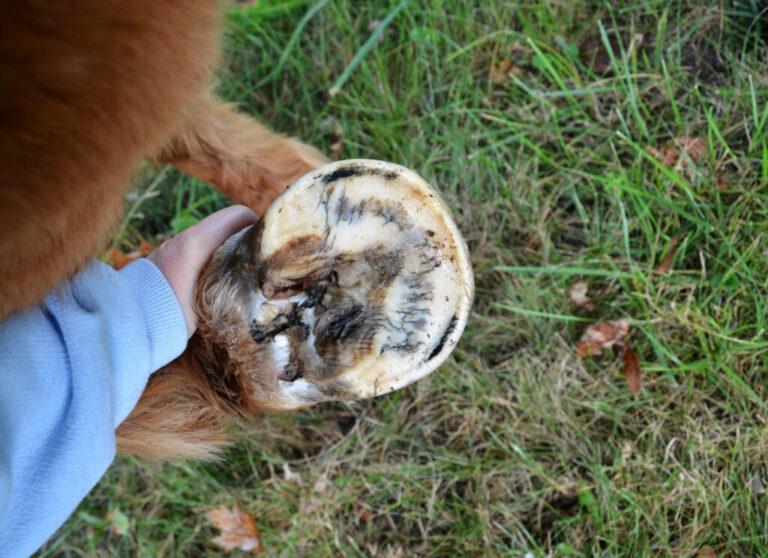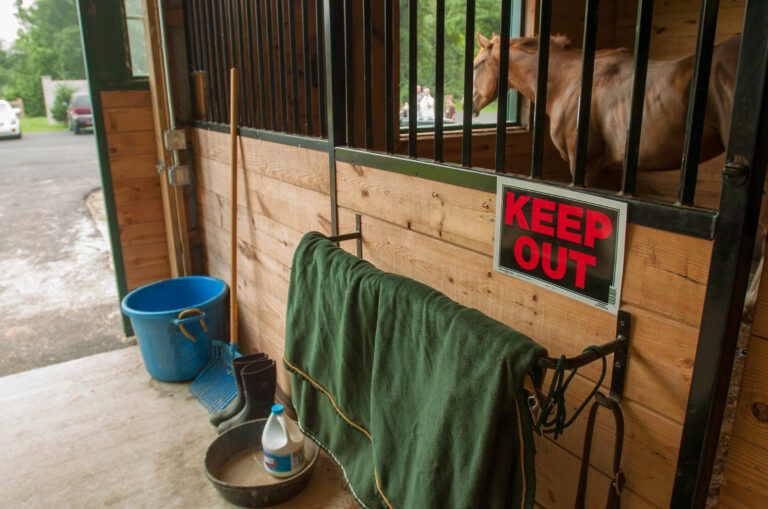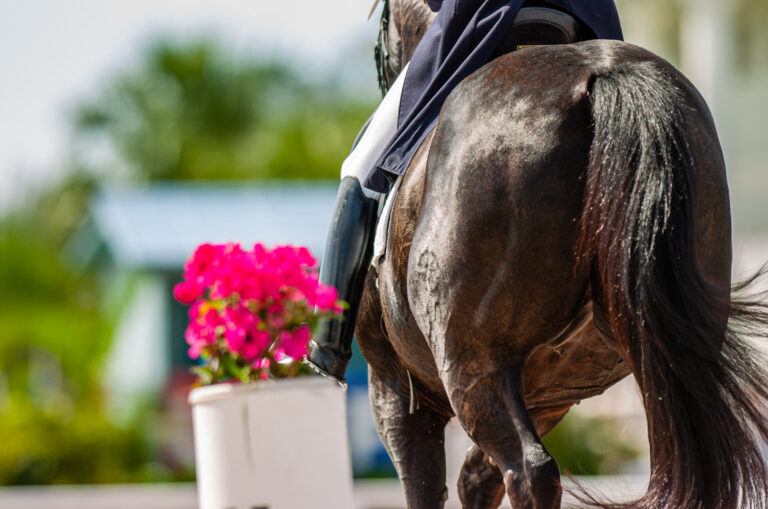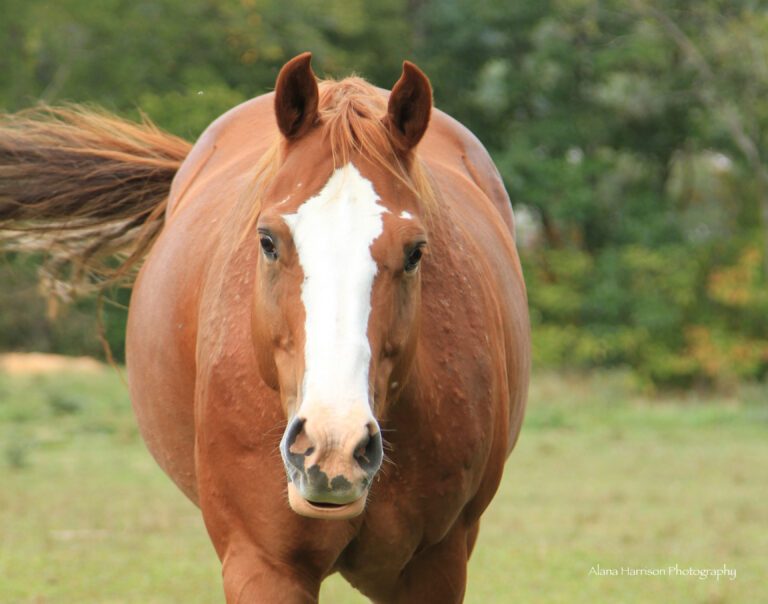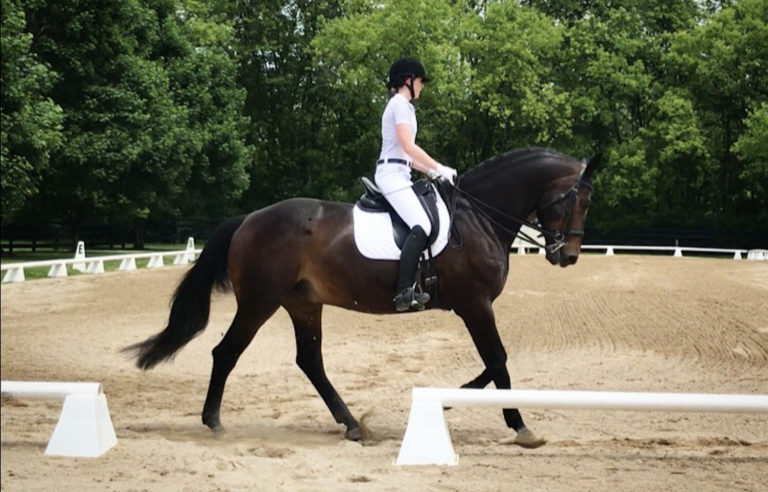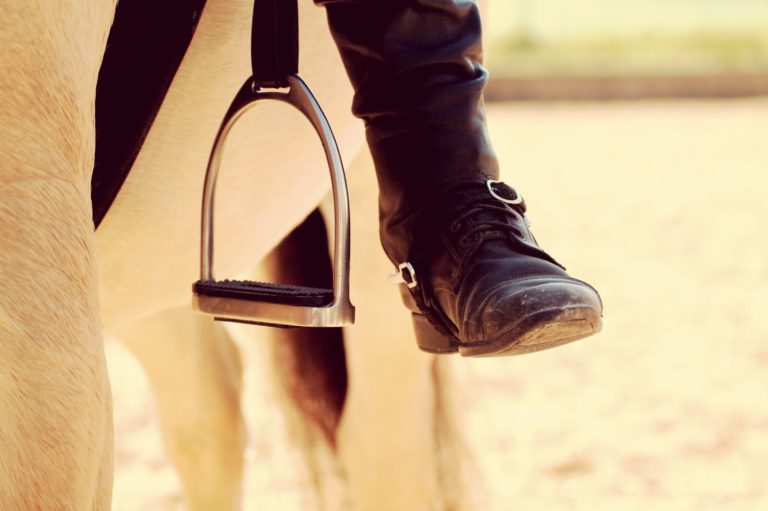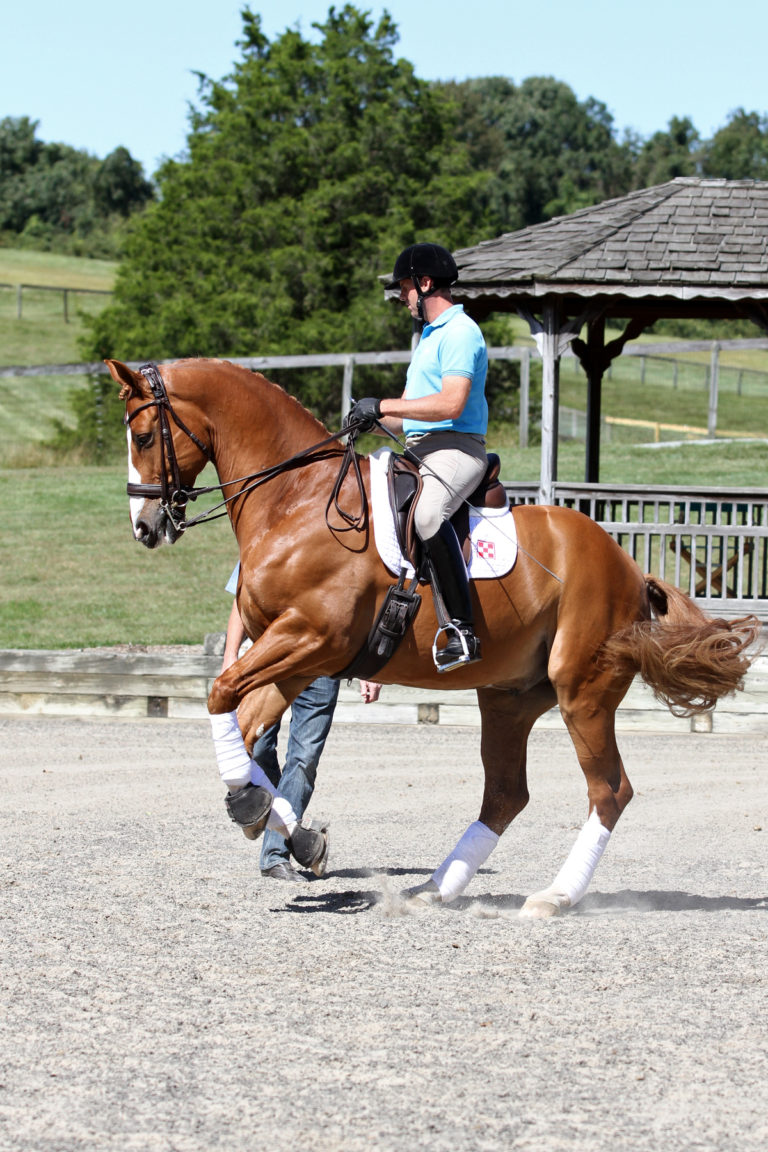Q: My horse has bog spavin in both hind legs. He’s a 7-year-old, warmblood gelding recently imported from Europe. His hind legs are slightly on the straight side. He has a long, rather straight neck and a longish back. He is not lame but often swishes his tail at the trot, even when longeing him without a saddle or rider, so I assume he’s uncomfortable. What is the best treatment, and what is the prognosis? What is the cause? —Name withheld by request
A: Bog spavin is excess fluid in the tibiotarsal joint—the upper joint of the hock—that is responsible for flexion. There are many causes. In warmblood horses, one common cause is Osteochondrosis (OCD), a developmental syndrome that results in loose pieces of cartilage and bone being present in the joint. These “chips” often result in irritation of the joint, which can cause increased fluid—the bog spavin.
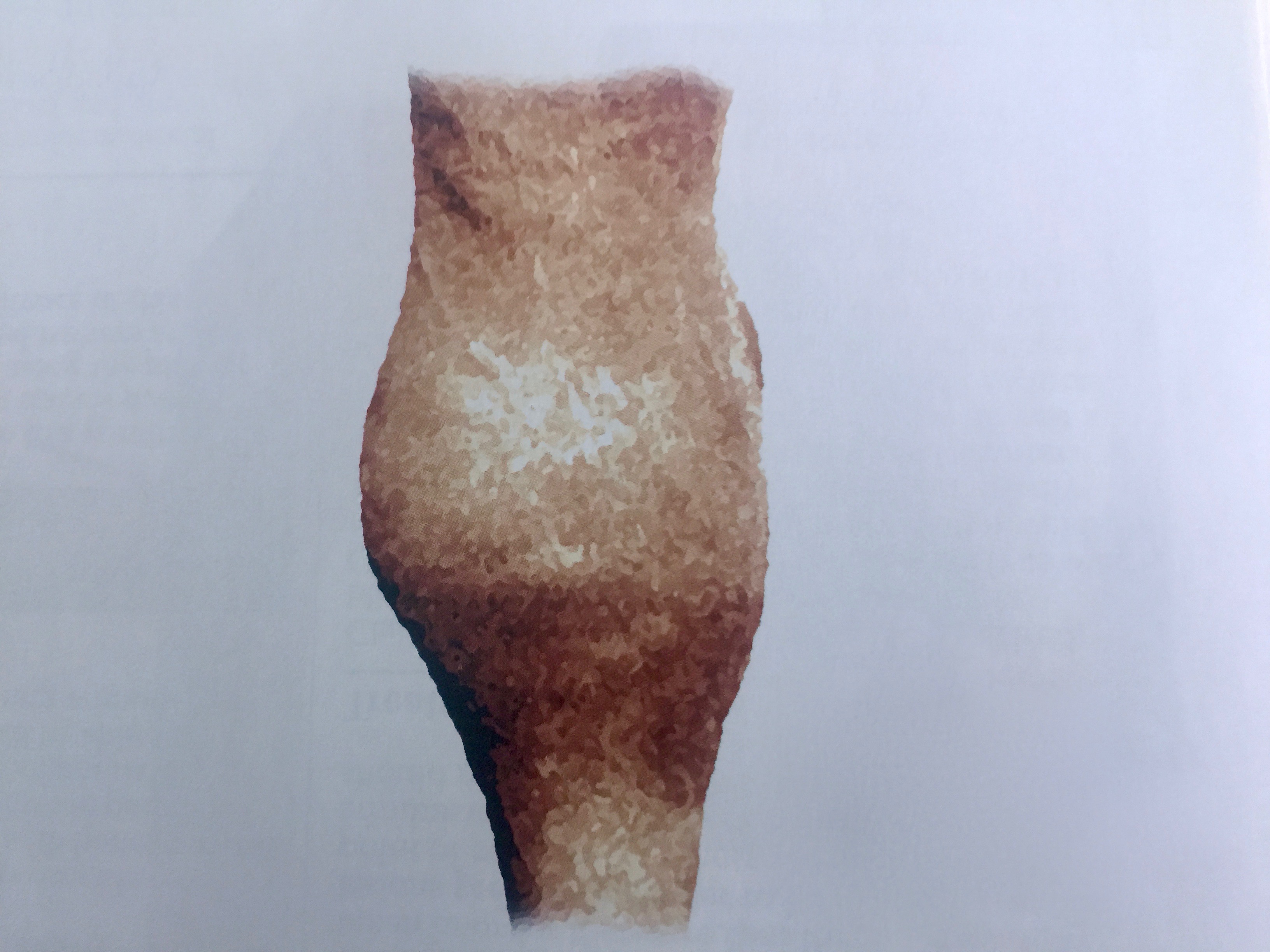
Most horses with OCD of the hocks are not lame from the problem, but the clinical significance of the problem does depend on the size and exact location of the lesion in the joint. For instance, the most common site within the tibiotarsal joint for OCD is an area at the distal intermediate ridge of the tibia. Loose fragments from this site sometimes result in a bog spavin, but rarely cause lameness, because the location of the defects are not involved in joint motion very much. However, we generally elect to remove these fragments to prevent the development of effusion (the abnormal accumulation of fluid within the joint) and possible lameness.
Alternatively, OCD lesions that occur on the lateral trochlear ridge of the tibiotarsal bone can result in large areas of cartilage and bone loss and an irregular joint surface. These lesions may cause both a bog spavin and more commonly result in dysfunction of the joint, pain and lameness. Even a horse that has had arthroscopic surgery to remove the OCD fragments may end up with a “boggy” hock. Other reasons for bog spavin can be nutritional (from imbalances in protein/carbohydrate ratios), strain of the collateral ligaments or inflammation of the joint lining from over work.
This being said, your horse may have other reasons for appearing uncomfortable in his work. The straight hocks and long back predispose to excess stress on these structures. The hock joints that take the strain would be the lower, low motion joints; not the one described above that is associated with bog spavin. Tail swishing is a very nonspecific sign of discomfort so careful veterinary examination should be sought to determine whether the hocks, the back or some other structure or issue is responsible for your horse behaving as though he is uncomfortable.
The prognosis for soundness in a horse with bog spavin depends on the cause of the effusion. In most cases, horses with bog spavin are not lame so the prognosis for soundness would be considered good. The prognosis for a normal looking hock is more guarded as sometimes, if the effusion has been present for some time, the actual capacity of the joint is enlarged, and the joint fluid is produced to fill the space, thus maintaining the distended state of the joint.
Simply having a bog spavin does not preclude a horse from upper-level dressage or other elite competition. But it might signal a weakness, previous problem or injury, and therefore a horse that has a bog spavin should be carefully examined to determine the cause. In some cases the cause may not be possible to determine.

Greg Staller, DVM, DACVS, graduated from the University of California at Davis with a B.S. in biochemistry as well as his veterinary degree. After completing an internship and residency in large animal surgery at New Bolton Center in Pennsylvania, he became board-certified as a Diplomate of the American College of Veterinary Surgeons in 1995. He is a certified FEI (Fédération Equestre International) veterinarian in dressage, eventing and combined driving. He owns and operates Running ‘S’ Equine Veterinary Services, in Califon, New Jersey (runningsequine.com).


